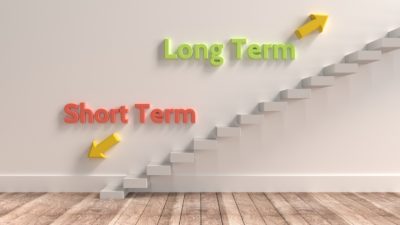Shares in AstraZeneca (LSE: AZN) (NYSE: AZN.US) are by some measures pretty cheap. The dividend yield is 5.5% — an attractive payout that’s well above the market average. And the forward P/E is just 11, which means you’re only paying 11 times the average of analysts’ forecast earnings to own the shares today.
However, the P/E in terms of current year earnings is more like 10.5x, and on the basis of last year’s earnings it’s merely 9!
This is the opposite of what you’d usually want to see in a company, since you’d normally demand to pay a lower multiple for uncertain future earnings, compared to those that are already in the bag.
How has this come about? Well, AstraZeneca’s earnings are expected to fall for several years to come. Assuming the price stays where it is, AstraZeneca will actually get more and more expensive on a P/E basis.
That shrinking feeling
For many years, the pharmaceutical giants like AstraZeneca and its main UK rival, GlaxoSmithKline, minted money as a result of drugs they’d already brought to market. It’s hard to develop a new drug and to get it approved (to understate things) but once they’re in circulation and protected by patents then these treatments provide a reliable and growing income stream. In the past the big winners came thick and fast, and the coffers swelled.
However, somewhat like a successfully treated illness, a patent does not last forever. The early 2000s saw a lot of talk about the ‘patent cliff’, which would see drugs makers lose protection on their key money-spinners, and thus concede market share to so-called generic manufacturers who can copy and release the same products cheap.
And AstraZeneca has truly run off that cliff.
That’s got to be worth something
However, despite the scary-sounding cliff metaphor, AstraZeneca won’t lose all its revenues even when the rest of its key drugs come off patent. And depending on how you do the sums — and how much luck goes its way — AstraZeneca could steadily wind its business down, returning cash to shareholders as it went and steadily shrink in size, and that could still be a profitable outcome, depending on what the eventual rump of the business is worth.
Less radically, it can try to replace the drugs coming off-patent with new blockbuster medicines that staunch the bleeding on the income line and eventually get earnings growing again, too — which is, not surprisingly, plan A.
The company might do this by using its strong balance sheet and cash flow to acquire new drugs that it can exploit via its globe-spanning commercial operations. But chief executive Pascal Soriot is pinning his hopes on developing more drugs in in-house, rather than on making big and risky acquisitions that so often fail to pay off.
Management matters
So will AstraZeneca’s pipeline deliver new smash hit drugs in time to plug the hole in its revenues?
The truth is few investors are well qualified to make these specialist judgments. What’s more, it’s unclear to me that the analysts who follow AstraZeneca’s business have any better idea than management, which after all have every incentive to try to back the very best candidates.
This may sound like a counsel of despair, but I think it’s more a healthy dose of realism. The key decision in investing in AstraZeneca is to decide whether you like the management, whether you think it has made the right move in pursuing in-house development, and whether you believe it’s wisely managing its resources in order to do so (including how it allocates that shrinking cash stream between dividends, buybacks, and spending on R&D).
Is AstraZeneca the next GlaxoSmithKline?
Finally, I remember when GlaxoSmithKline was considered to be in a worse position than AstraZeneca, and thought more vulnerable to the patent cliff.
Well, Glaxo got over the cliff, revenues are stabilising, and earnings per share are rising again. Why shouldn’t the same be true of AstraZeneca?






